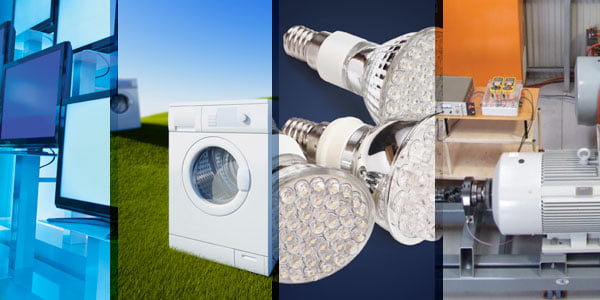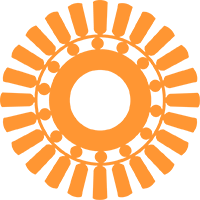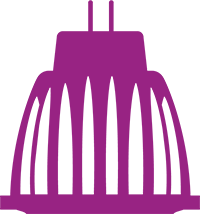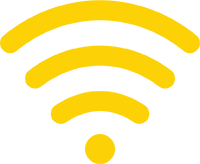1. Goals and Scope of the 4E Technology Collaboration Programme (4E TCP)
The aim of the 4E TCP is to promote energy efficiency as the key to ensuring safe, reliable, affordable and sustainable energy systems.
As an international platform for collaboration between governments, the 4E TCP provides policy guidance to its members and other governments concerning energy using equipment and systems.
The 4E TCP prioritises technologies and applications with significant energy consumption and energy saving potential within the residential, commercial and industrial sectors (not including transport).
To meet its aims, the 4E TCP harnesses the expertise of governments, industry, experts and other TCPs for joint research related to the development and deployment of energy efficient equipment.

2. Deliverables of the 4E Technology Collaboration Programme
To achieve its aims, the 4E TCP will:
Collect data, analyse information, share expertise and pool resources, including:
- Gather information about the energy consumed by equipment and systems, relevant policies and savings potential from 4E TCP members and other sources.
- Utilise the combined expertise of 4E TCP members to undertake targeted research and analysis.
- Co-ordinate with strategically important external organisations and build collaborative networks.
Support and strengthen government policy and regulation, including:
- Distil technical issues into reputable, evidence-based, policy considerations.
- Co-ordinate internationally accepted approaches with member governments.
- Maintain a work program aligned to member government priorities.
Disseminate information to develop greater understanding and promote government actions that encourage the uptake of energy efficient equipment, including:
- Undertake strategic outreach to inform and influence beyond the 4E TCP, including engagement with the IEA and other TCPs, and relevant international organisations.
- Exchange and disseminate information to targeted stakeholders from non-member countries and industry.
Learn More
Since 4E was established in 2008, the world in which it operates has seen many changes. 4E’s new Strategic Plan reflects priorities of the 2022 Ministerial Communique and the IEA Medium-term Strategy for Energy Research and Technology (2023-2027).
During the new term, 4E will work with policy makers to encourage adoption of the technologies needed to reach Net Zero Emissions by 2050.
To achieve this, 4E will build on its experience and established networks to bring a policy focus on the important areas of Demand Flexibility, Energy Using Systems and Emerging Technologies.
To support successful policy implementation, 4E’s activities will continue to span policy design, standardisation, capacity building and interactions with key stakeholders.
We will enhance our successful interactions with the IEA Secretariat, Energy Efficiency Hub, SEAD, TCPs and other fora representing relevant areas of knowledge.
Click here to download the Strategic Work Plan 2024-2029 summary.
Click here to download the 2024-2029 Presentation to the EUWP, the Working Party feedback and the final CERT notification of approval for the 2024-2029 extension.
During its third term 4E has provided a highly effective international platform for governments to collaborate on the development of policy measures, designed to stimulate the uptake of energy efficient end-use technologies.
Building on the platform that has positioned the 4E TCP as an effective and reputable source of information and guidance, during 2019-2024 the 4E TCP will implement a work programme that is consistent with the strategic priorities of the 4E TCP and the IEA, with particular reference to the Medium-term Strategy for Energy Research and Technology 2018-2022.
Click here to download the Strategic Work Plan 2019-2024 summary.
During its second term, the 4E TCP has provided a highly effective international platform for governments to collaborate on the development of policy measures designed to stimulate the uptake of energy efficient end-use technologies.

“During the first five year term of the 4E Implementing Agreement it has successfully established itself as an international forum between countries seeking to collaborate on energy efficiency policies for appliances and equipment. In doing so, it has forged strong relationships with the IEA Secretariat and other groups from the public and private sector. 4E’s research and analysis is now recognised as making a unique and significant contribution to the energy efficiency policy debate.
Through this Strategic Plan, 4E aims to build on this foundation over the next five years in order to take advantage of the huge opportunities for end-use energy efficiency identified by the World Energy Outlook and other analysts.
While there appears a limitless number of useful activities for 4E, resource constraints demand that we take care in selecting projects that add value for our members and a wider group of stakeholders, represent a true collaborative effort and lead to significant energy and greenhouse savings. These principles have served 4E well during the first term enabling us to deliver on expectations.
While a number of changes are planned for the second term that allow 4E to expand our scope and more closely reflect the policy needs of our members, we are confident that the good management practices established in the first term will ensure that we remain focussed on achieving tangible outcomes.”
Mike Walker, Chair, 4E Implementing Agreement 2012-14
Downloads:
“4E was launched in 2008 to provide a forum for international collaboration between countries on energy efficiency policies and technologies for appliances and equipment.
Much has happened during our first five years. Firstly, the profile of energy efficiency has grown, becoming recognised as an essential component in many national strategies to address climate change, energy security and kick start economic revivial through developing clean energy technologies.
Secondly, after an initial period where 4E focused on research, we have seen the intense work of the Annexes bear fruit and as more ‘results’ become available this has meant a greater emphasis on 4E’s outreach activities. The effectiveness of 4E’s communication and dissemination to key target groups has been impresive: with over 180 publications in several languages, 4E is now referenced by governments, policy makers and industry as a source of authoritative and comprehensive information.
Over the past five years, we have also seen the emergence of new international fora in CEM, IPEEC and SEAD, while the Asia-Pacific Partnership (APP) is no longer with us. 4E’s collaborations with these and other organisations play a key role in broadening the influence and uptake of our work. During 2011, there has also been the opportunity to expand our dialogue with industry, most notably through the Solid State Lighting and Motor Systems Annexes.
From the outset, 4E has attempted to deliver projects that answer some of the key questions faced by Governments – concerning both technology and policies. The fact that we have seen widespread reference to 4E’s work suggests that the projects selected are proving to be strategically important. Here, 4E’s evaluation of which energy efficiency policies have really worked, in lighting, motor systems and electronics, across most major economies, form a sound basis for governments to develop better national and international policies in the future.
Looking back at the end of five years, I am happy to say that my expectations have been exceeded and 4E is now established as a significant player within the energy efficiency environment. Most importantly, our member governments continue to believe that 4E has a valuable contribution to make.”
Hans-Paul Siderius, Chair, 4E Implementing Agreement, 2008-2012
Strategy for the IEA 4E Implementing Agreement
At the Gleneagles summit in 2005, G8 leaders addressed the challenges of climate change and securing clean energy and sustainable development. Agreeing to act with resolve and urgency, they adopted a Plan of Action which included energy efficiency in buildings, appliances, transport and industry.
Since then, research and analysis at the International Energy Agency has shown that improving energy efficiency is the most cost-effective concrete action governments can take in the short term to address climate change and energy security concerns and to reduce energy consumption. For example, results of analysis outlined in the IEA publication Energy Technology Perspectives 2006 identify energy efficiency gains as “the first priority for a more sustainable energy future”.
Energy saving potential in residential electricity consumption
The residential sector alone currently accounts for 30% of all electricity consumed in OECD countries, corresponding to 21% of energy-related CO2 emissions.
Many countries have implemented energy efficiency policies in many sectors over the years, in some cases for several decades. Such programmes, including combinations of mandatory and voluntary schemes, may be highly effective in raising the market share of the most efficient equipment and appliances, and in paving the way for new efficient technology.
4E activities designed to advance consumer access to energy efficient electrical appliances
However, the uptake of efficient electrical end-use equipment is hampered by the presence of multiple barriers which isolate consumers from the consequences of their energy choices, including:
- Lack of information on, or the low priority given to the energy performance of appliances, buildings and automobiles.
- Tax incentives and subsidies that promote wasteful energy use (e.g. tax breaks that encourage car use).
- Split incentives between investors and end-users with regard to the performance of energy-using equipments (e.g., for building technology choices).
- Failure to incorporate fully the energy security risks in market prices.
In addition, as electrical equipment is traded globally, international co-operation and coordination will be vital to ensuring coherent, efficient action. The need for further global co-operation and development of energy efficiency policies is widely recognised by the International Energy Agency (IEA), the G8, the Asia-Pacific Partnership (APP) Initiative, the Marrakech Accord, the European Commission (EC) international energy efficiency initiative and in other international context.
Enhancing and promoting the best appliances
The 4E will integrate and continue activities previously undertaken by the Group of Energy Efficient Appliances (GEEA) aiming at promoting the best appliances at the market. The 4E will also build on progress made in the Collaborative Labeling and Appliance Standards Program (CLASP), in the International Task Force for Sustainable Products (ITSFP) and other relevant international co-operative efforts.
Therefore a platform is urgently needed for countries to share expertise, to ensure coordination of international initiatives aimed at implementing efficiency improvements in electrical equipment. The IEA Implementing Agreement for a Co-operative Programme on Efficient Electrical End-use Equipment (4E) is designed to fill this gap.
Downloads:




































